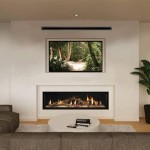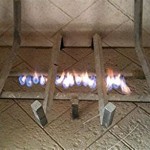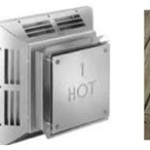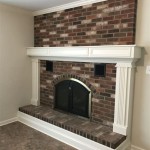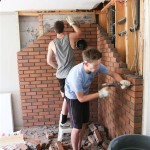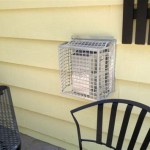Replacing a Fireplace Insert with a Wood Burning Stove: A Comprehensive Guide
Many homeowners initially opt for a fireplace insert to add supplemental heating to their homes and enhance the ambiance of a traditional hearth. However, changing needs, aesthetic preferences, or performance expectations can lead to a desire to replace that insert with a freestanding wood burning stove. This transition involves careful planning, understanding building codes, and potentially modifying the existing fireplace structure. This article provides a thorough overview of the process, highlighting key considerations for a successful replacement.
A fireplace insert is essentially a stove designed to fit within an existing fireplace opening. It uses the fireplace's chimney for venting and often offers greater heating efficiency compared to an open fireplace. Wood burning stoves, on the other hand, are freestanding appliances, typically placed directly on the floor or a hearth pad. They offer a 360-degree radiant heat source and often come with unique design features. Deciding to switch from an insert to a stove typically stems from a desire for increased heating capacity, a different aesthetic, or easier maintenance.
Understanding the Key Differences and Considerations
Before embarking on this project, it is crucial to grasp the fundamental differences between fireplace inserts and wood burning stoves. This understanding will influence the planning, permit acquisition, and ultimately, the installation process.
One major difference lies in heat output. While both can provide supplemental heat, wood burning stoves are often designed with larger fireboxes and potentially higher BTU (British Thermal Unit) ratings. This means they can heat larger areas more effectively. Homeowners looking for increased heating capacity often find wood burning stoves more suitable.
Another key consideration is aesthetics. Fireplace inserts are designed to blend into the existing fireplace structure. Wood burning stoves, however, are focal points, often chosen for their design and appearance. The visual impact of a stove can significantly alter the room's ambiance.
Chimney requirements are also critical. While both use chimneys for venting, the specific requirements for chimney liners and flue sizing can vary. A stove often requires a dedicated chimney liner of a specific diameter, potentially necessitating professional inspection and installation.
Finally, consider maintenance and cleaning. While both require regular maintenance, the process can differ. Cleaning a stove's firebox and chimney is usually more straightforward than cleaning an insert nestled within a fireplace opening.
Local building codes and regulations are paramount. Before proceeding, contact the local building department to understand permit requirements, inspection procedures, and any specific restrictions on wood burning appliances. Failure to comply with these regulations can result in fines and the need to remove the stove.
Preparing the Fireplace and Surrounding Area
The preparation phase involves removing the existing insert and modifying the fireplace opening to accommodate the new stove. This step requires careful attention to detail to ensure safety and proper stove operation.
Begin by safely disconnecting and removing the fireplace insert. This typically involves disconnecting the flue connection and carefully maneuvering the insert out of the firebox. It is highly recommended to have a professional assist with this process, as inserts can be heavy and cumbersome.
Once the insert is removed, thoroughly clean the fireplace interior. Remove any soot, creosote, or debris. Inspect the fireplace's structure for any damage, such as cracks or crumbling brickwork. Repair any damage before proceeding, as the fireplace structure will serve as a backdrop for the stove.
Assess the hearth. A hearth is a non-combustible floor covering that protects the surrounding floor from heat and embers. Wood burning stoves require a hearth of a specific size and thickness, as dictated by the stove's listing and local building codes. The existing fireplace hearth may or may not be sufficient. If it is not, you will need to extend or replace the hearth to meet the required dimensions and R-value (thermal resistance).
Consider the chimney connection. The stove's flue collar will need to connect to the chimney. This might involve installing a new chimney liner that meets the stove manufacturer's specifications. A properly sized and installed chimney liner is essential for safe and efficient stove operation. Consult with a qualified chimney sweep to determine the appropriate liner size and installation method.
Verify clearances to combustible materials. Wood burning stoves generate significant heat, requiring specific clearances to combustible materials such as walls, furniture, and curtains. These clearances are typically specified in the stove's installation manual. Ensure that the proposed stove location provides adequate clearances, or take measures to reduce clearances by installing heat shields or non-combustible wall coverings.
Installing the Wood Burning Stove and Chimney Liner
The installation phase is where the planning comes to fruition. This process often requires specialized tools and knowledge, and it is strongly recommended to hire a qualified professional for this step, especially if chimney liner installation is involved.
Position the stove on the prepared hearth. Ensure the stove is level and stable. Connect the stove's flue collar to the chimney liner using appropriate stove pipe and connectors. Follow the stove manufacturer's instructions meticulously to ensure a secure and airtight connection.
If a new chimney liner is required, have it professionally installed. This typically involves lowering a flexible stainless steel liner down the existing chimney and connecting it to the stove. The liner must be properly insulated and sealed to prevent creosote buildup and ensure proper draft.
Check for proper draft. Once the stove and chimney liner are installed, perform a draft test. This involves lighting a small fire in the stove and observing the smoke flow. A properly functioning chimney will create a strong updraft, drawing smoke out of the stove and up the chimney. If the draft is weak or nonexistent, it could indicate a problem with the chimney liner, flue size, or other factors.
Install carbon monoxide detectors. Wood burning stoves can produce carbon monoxide, a colorless and odorless gas that is lethal. Install carbon monoxide detectors in the vicinity of the stove to provide early warning in case of a malfunction.
Obtain final inspection. Once the installation is complete, schedule an inspection with the local building department. The inspector will verify that the stove is installed correctly, clearances are met, and the chimney liner is compliant with local codes. Passing the inspection is essential for legal and safety reasons.
After the inspection, allow the stove to “burn-in” according to the manufacturer's instructions. This process involves gradually increasing the size of the fires over several days to allow the stove's components to expand and contract naturally. This can help prevent premature wear and tear.
Proper operation of the stove is just as essential as proper installation. Only burn seasoned, dry wood. Never burn treated wood, painted wood, or trash, as these can release harmful pollutants into the air and damage the stove and chimney. Maintain the stove and chimney regularly, including cleaning the firebox and flue pipe to remove creosote buildup.
Replacing a fireplace insert with a wood burning stove can be a rewarding project, enhancing both the ambiance and heating efficiency of a home. However, it’s a complex undertaking. Careful planning, proper preparation, and adherence to building codes are essential for a safe and successful installation. Consulting with qualified professionals, such as chimney sweeps and stove installers, can ensure that the stove operates safely and efficiently for years to come.

How To Install A Wood Burning Fireplace Insert Fireplaces Direct Learning Center

Why A Wood Burning Fireplace Insert Bethesda Md Service

Why A Wood Burning Fireplace Insert Bethesda Md Service

What S Best A Fireplace Stove Or Insert We Love Fire

Wood Fireplace Insert Installation Overview By Rockford Chimney Supply

Wood Burning Fireplace Inserts Insert Installation

Why Put A Wood Insert Inside Fireplace Maple Mtn

How To Install A Wood Burning Fireplace Insert This Old House

Wood Inserts Martin S Stove Fireplace

Should You Change Or Convert Your Wood Fireplace

